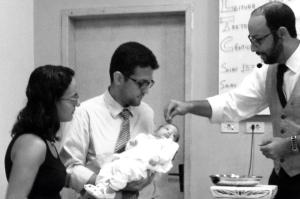
Reformed churches have historically practiced catechism preaching, typically in the afternoon or evening service. This practice dates back to the Reformation. However, in today’s milieu the practice is under threat. Some Reformed churches have long abandoned catechism preaching while others are heading in that direction. Sadly, even in churches that maintain it (like the Canadian Reformed and Free Reformed of Australia), there are members who not only question it, but actively repudiate it.
One of the chief objections often raised against catechism preaching is that it isn’t preaching on the Word of God. Instead, churches doing this are preaching on a human document. In so doing they’re actually repudiating the Protestant principle of sola Scriptura. The infallible Bible alone should be our “text,” and yet Reformed churches are preaching on a fallible Catechism.
Such an objection arises either from a caricature of catechism preaching or a misunderstanding of it. The caricature portrays a Reformed pastor who dryly exegetes the Catechism, perhaps even referring at length to the original German vocabulary and grammar, but who fails to open the Bible or even mention the Bible. In this caricature, the Catechism has indeed replaced the Bible. I say this is a caricature because I’ve never once encountered this type of “catechism preaching,” nor have I heard of it anecdotally. I doubt it exists. If it does, may it soon become extinct.
The common misunderstanding relates to the notion of what biblical preaching is. Nowhere does the Bible indicate that preaching must be on one isolated text, a verse or perhaps a series of verses. There’s no reason to conclude that preaching can’t exposit or explain the doctrine found in a number of Bible passages. In expository preaching, the preacher focusses on one isolated passage (naturally taking context into account as well) of Scripture. In catechism preaching, the preacher teaches the “whole counsel of God” on a doctrine while taking the whole Bible into account. If there ever is such a thing, catechism preaching that doesn’t work with the Scriptures is not worthy of the name “preaching,” and it isn’t biblical. However, done properly it too is the preaching of the Word of God.
In a lecture several years ago at the Canadian Reformed Theological Seminary, I heard Dr. Jason Van Vliet suggest we think of the relationship between regular Bible-text preaching and catechism preaching in terms of nouns, verbs, and adverbs:
The nouns are the same — if done properly, in both instances our subject material is the Word of God.
The verbs are the same — if done properly, in both instances we are preaching the Word of God.
The adverbs are different — in the first instance we are preaching from a single text of Scripture (in what I would call an expository manner); in the second instance we are preaching catechetically from a broader range of God’s revelation in Scripture.
When things are put in this manner, no one should have a difficulty in agreeing that catechism preaching can and should be biblical preaching.
Hosea 4:6 says, “My people are destroyed for lack of knowledge…” Lack of knowledge, including knowledge of the doctrines of Scripture, is destructive. Catechism preaching aims to build up God’s people in their knowledge of what his Word teaches. Catechism preaching is constructive — and so why wouldn’t any Reformed believer cherish it?
(Adapted from chapter 13 of my forthcoming book Aiming to Please: A Guide to Reformed Worship)


